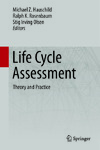| dc.description.abstract | It is an old observation that ‘What gets measured gets managed’, and that what is
not measured or measurable runs the risk of being neglected. It is therefore
important that we have tools for assessing the sustainability of our choices when we
develop the technologies and systems that shall help us determine and meet the
needs of the present generations in a way that does not compromise the ability of
our descendants to meet their needs in the future.
As you will learn from this book, we must take a life cycle perspective when we
want to assess the sustainability of the solutions that lie in front of us. You will be
presented with many examples of problem shifting where solutions that improve or
solve a targeted problem unintentionally create other problems of environmental,
economic or social nature somewhere else in the systems of processes and stakeholders
affected by our choice. If we do not consider the totality of these systems in
our analysis, we will fail to notice these unwanted consequences of our decision and
we will not be able to take them into consideration. We also have to consider a
broad range of potential impacts in our assessment, in fact all those is that the
system can contribute to and that we consider relevant in the context of our
decision-situation.
Life Cycle Assessment, LCA, offers this totality—it analyses the whole life
cycle of the system or product that is the object of the study and it covers a broad
range of impacts for which it attempts to perform a quantitative assessment. The
focus of LCA has mainly been on the environmental impacts although both social
and economic impacts can be included as well. It is an important assessment tool as
demonstrated by the central role that it has been given in the environmental regulation
in many parts of the world and certified by its ISO standardization and the
strong increase in its use over the last decades by companies from all trades and all
over the world. | en_US |

